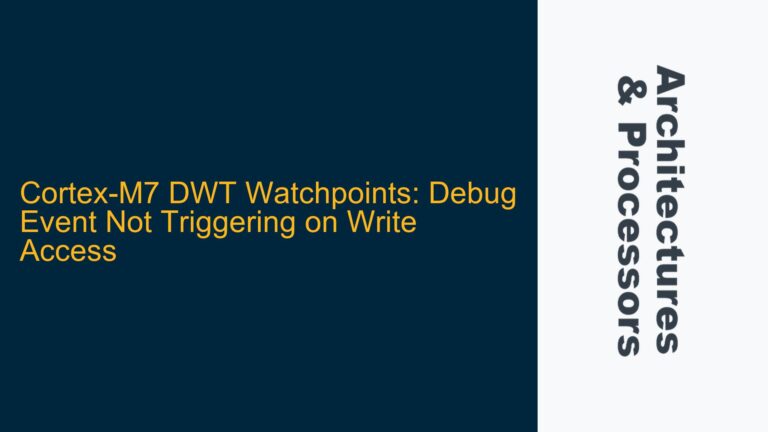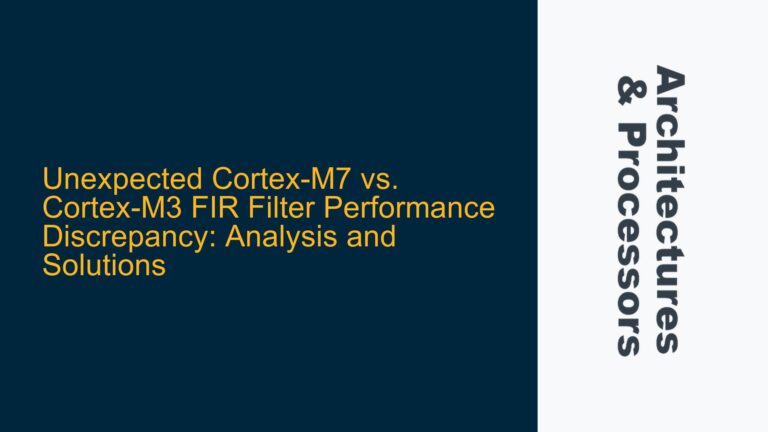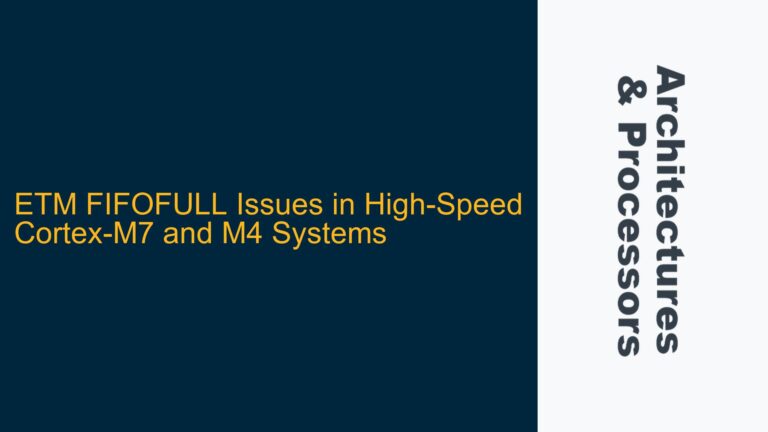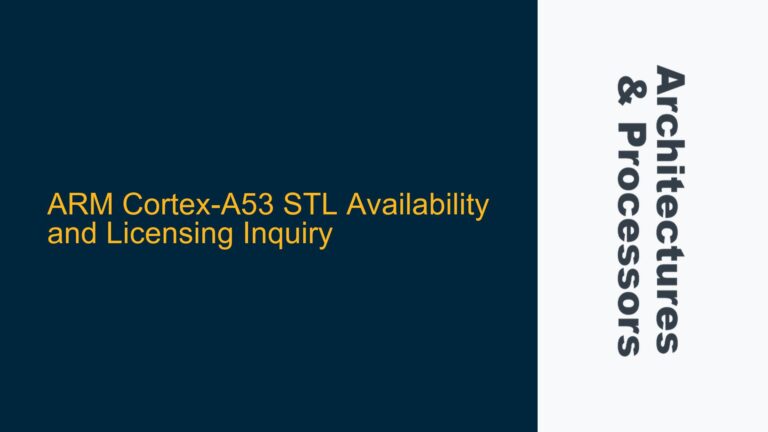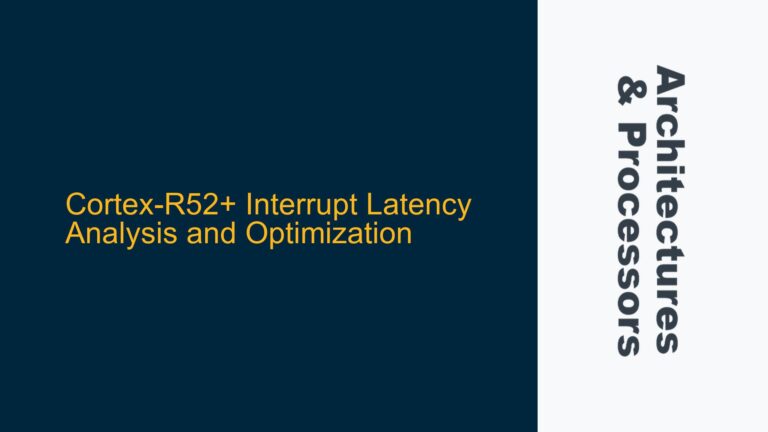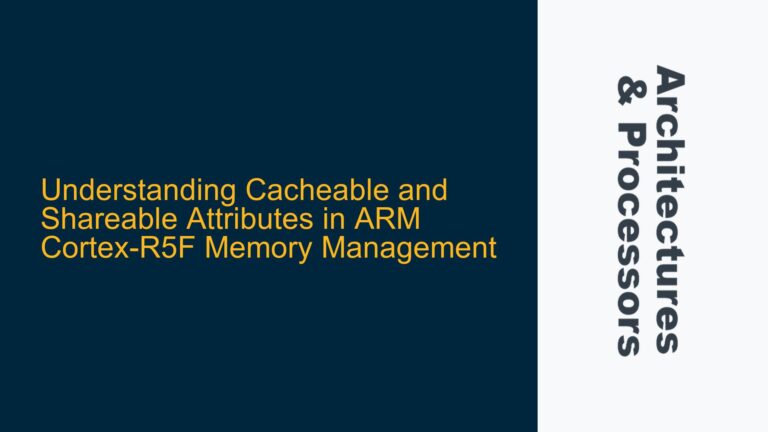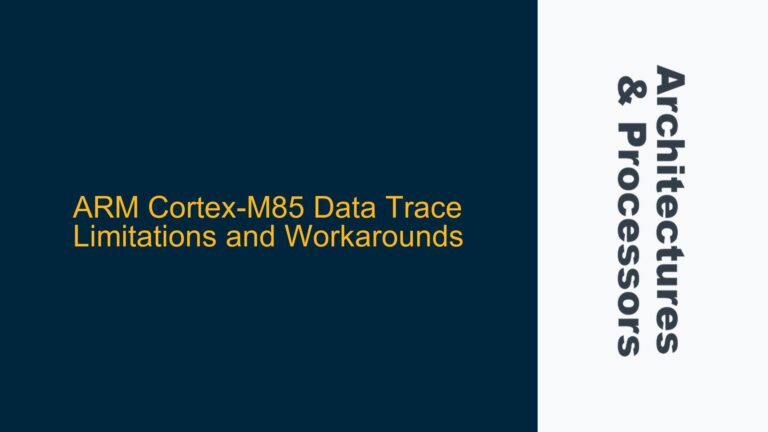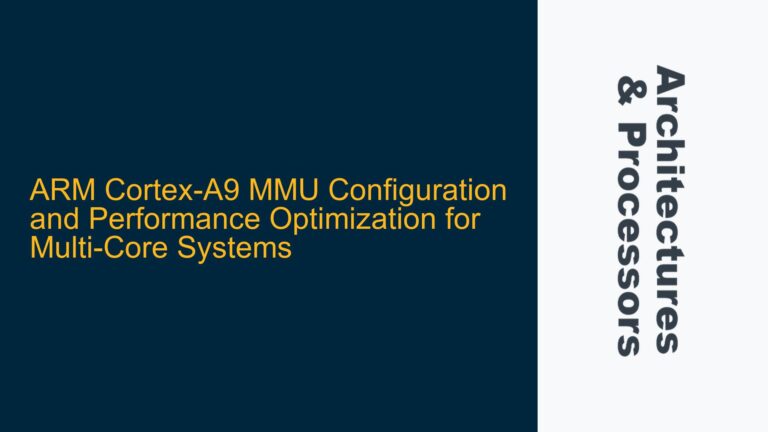Cortex-M7 DWT Watchpoints: Debug Event Not Triggering on Write Access
Cortex-M7 DWT Watchpoint Configuration and Debug Event Issues The Cortex-M7 processor’s Data Watchpoint and Trace (DWT) unit is a powerful tool for debugging complex issues such as race conditions, memory corruption, and unexpected behavior in embedded systems. The DWT allows developers to set watchpoints on specific memory addresses, triggering debug events when those addresses are…
